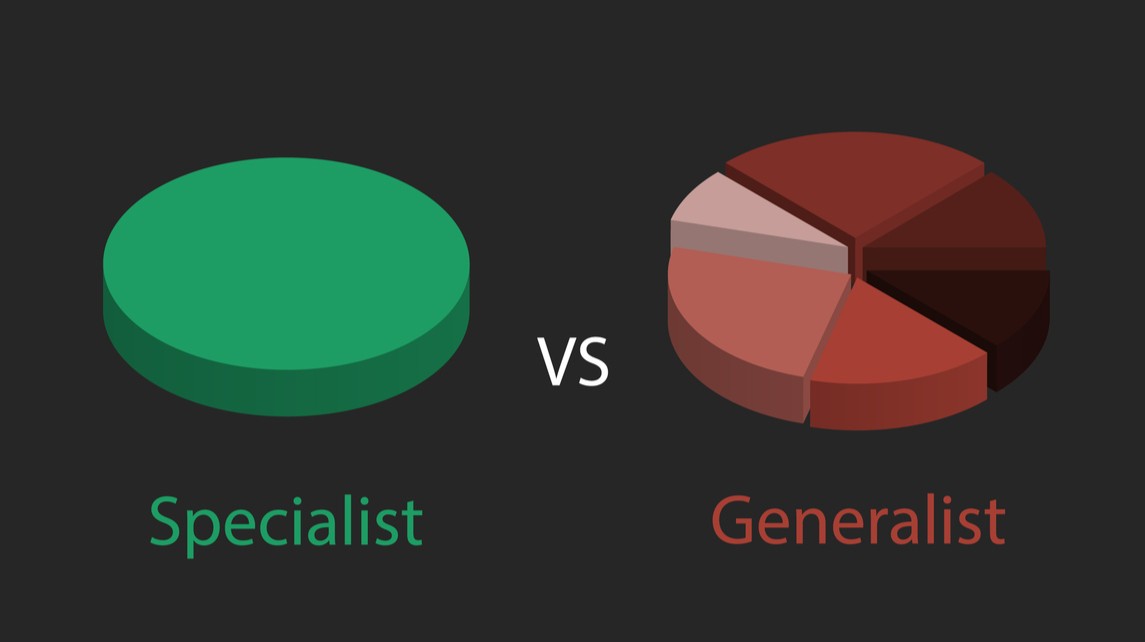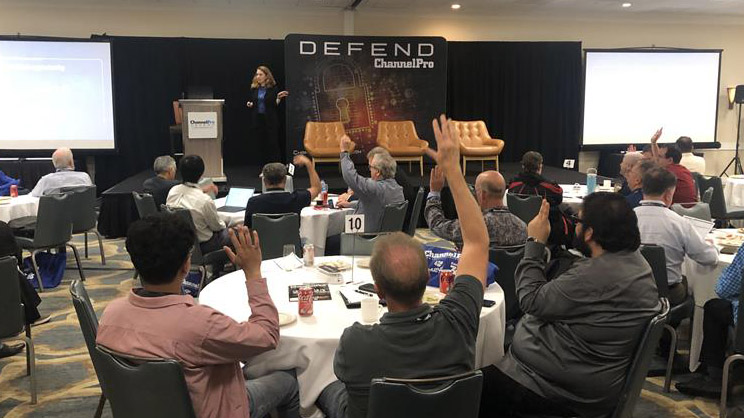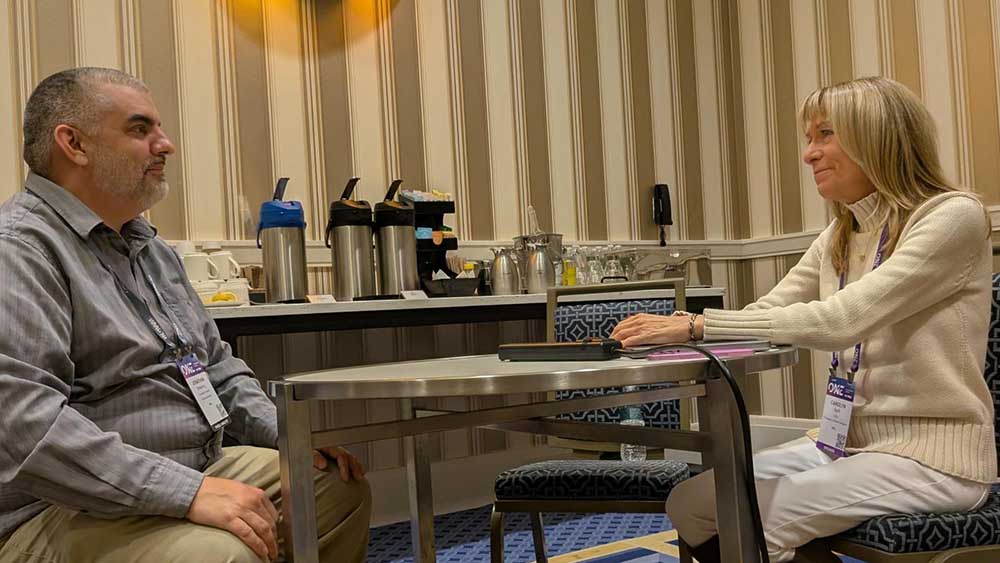MSPs face an important strategic decision early in their growth journey: Should you serve a wide variety of clients across industries (a generalist approach) or focus on becoming an expert in one or more specific verticals such as healthcare, legal, finance, or manufacturing (vertical specialization)?
This guide breaks down the pros and cons of each approach, considering profitability, operational efficiency, marketing effectiveness, and long-term scalability. You’ll also find practical tips for evaluating which model best suits your market, your team’s skills, and your business goals.
Option 1: Generalized MSP — Serve All Industries
Pros
- Larger Target Market: You’re not limited by industry, allowing you to pursue more prospects and maintain flexibility when responding to market changes.
- Diverse Revenue Streams: If one industry is hit by economic downturns or compliance shifts, others may stay stable. This spreads out your risk.
- Opportunity to Discover Your Ideal Clients over Time: Working across industries may help you learn which types of clients you enjoy serving most — and which ones are most profitable.
- Broad Toolset Exposure: Supporting clients in multiple industries exposes your team to different applications, systems, and use cases. This builds a versatile skill set.
Cons
- Harder to Systematize Service Delivery: Different industries often use different tools, require different SLAs, and have different support expectations. That makes standardizing operations and pricing more difficult.
- Marketing is Generic: Without a focus, your messaging must appeal to a broad audience. This can feel diluted or vague — making it harder to stand out from competitors.
- Longer Learning Curves for Each New Client Type: Your team may spend more time getting up to speed on each new client’s needs and industry context.
Best Fit
- Newer MSPs, or those in smaller markets, where specialization might be too limiting
- MSPs with a flexible team and a broad service portfolio
Option 2: Vertical Specialization — Focus on One Industry
Pros
- Clear Market Differentiation: “We specialize in IT for dental practices” is far more memorable than “We do IT for anyone.” Specialization allows you to position your MSP as the go-to expert in that field.
- Efficient Service Delivery: You can standardize tech stacks, processes, and onboarding across clients in the same industry. This drives operational efficiency and reduces support time.
- Easier to Train and Scale Staff: Fewer systems, processes, and client types mean easier training, better documentation, and more predictable work.
- Higher Value Perception: Clients in vertical markets are often willing to pay a premium for specialized providers who understand their compliance needs, workflows, and pain points.
- Referral Growth Opportunities: Clients within the same vertical are often part of associations or peer groups. Once you’re trusted by one company, referrals can spread fast.
Cons
- Narrower Market Focus: If your chosen industry experiences a downturn (e.g., healthcare regulatory delays, economic impact in construction), your pipeline and revenue likely will take a hit.
- Greater Initial Investment: You may need to invest in certifications, vertical-specific tools, or compliance frameworks (e.g., HIPAA for healthcare).
- Client Fit Becomes Critical: If a client in your chosen vertical is a poor cultural fit, your options to replace them within your niche may be more limited than in a generalist model.
Best Fit
- MSPs ready to scale and create operational efficiencies
- MSPs based in areas with a strong concentration of businesses in a specific industry
- MSPs interested in building deep expertise and marketing in a niche
How to Decide Which Model is Right for You
Ask yourself:
- What industries do I already serve — and which are the most profitable or enjoyable?
- Are there verticals in my geographic region that are underserved or growing quickly?
- Do I have staff with industry-specific experience that could give me a competitive edge?
- What would it take to tailor my services, tools, and messaging to one vertical?
- Do I have the marketing resources to brand myself as a specialist?
Transitioning from Generalist to Specialist
If you’re currently serving a broad client base but want to move toward verticalization:
- Identify a dominant pattern among your best clients.
- Build a vertical-specific landing page and marketing assets to test response in your campaigns.
- Create case studies and testimonials from clients in your target industry.
- Shift your service stack (e.g., compliance tools, reporting formats) to meet vertical needs.
- Don’t drop all other clients immediately. Focus on new client acquisition within the vertical while maintaining legacy clients.
Conclusion
There’s no universally correct answer. Some MSPs thrive with a diverse client base, while others find success and scale faster by specializing. Align your business strategy with your team’s strengths, your local market opportunities, and your long-term goals.
Checklist: Should My MSP Specialize or Stay Generalized?
How to Use This Checklist
This checklist helps you evaluate whether your MSP is better positioned for a generalized business model (serving a variety of industries) or a vertical specialization model (focusing on one or two industries you know well).
For each question, mark Yes or No. After completing all the questions, use the Scoring Guide to assess which strategy may be a better fit for your business right now.
We recommend revisiting this checklist every six to 12 months, especially if your client base is evolving or you’re considering a rebranding effort.
Checklist Questions
1. Do I Already Serve Multiple Clients within the Same Industry (e.g., 3+ Healthcare or Legal Firms)?
- If Yes: You may already have a foothold for specialization.
- If No: You may need to evaluate if a vertical focus is realistic based on your current client base.
2. Is There a Strong Concentration of a Specific Industry in My Geographic Region or Sales Territory?
- If Yes: Specializing may give you a competitive advantage in a well-defined market.
- If No: Staying generalized could allow you to serve a wider variety of available prospects.
3. Do I or My Team Have Experience, Certifications, or Insights in a Specific Industry (e.g., HIPAA, FINRA, CMMC)?
- If Yes: Industry-specific knowledge can reduce onboarding time, increase trust, and justify premium pricing.
- If No: Consider whether it’s worth investing in training and credentials to gain a foothold in a niche.
Do I Currently Struggle to Differentiate Myself in Marketing or Sales Conversations?
- If Yes: A vertical focus could clarify your messaging and boost marketing effectiveness.
- If No: Your generalist positioning may already be working. Track conversion rates to be sure.
5. Am I Able and Willing to Tailor my Service Stack (Tools, SLAs, Compliance Processes) to One Industry?
- If Yes: You’re likely ready to build scalable, repeatable service packages within that vertical.
- If No: A more generalist model may help maintain operational flexibility.
6. Do I Have the Capacity (in Time, Staffing, or Budget) to Build Marketing Materials, Case Studies, or Landing Pages for a Vertical?
- If Yes: Specialized marketing can pay off quickly when targeted properly.
- If No: Focus on refining generalist positioning or consider phased vertical marketing over time.
7. Are My Most Profitable and Easiest-to-manage Clients Concentrated in One Industry?
- If Yes: Your profitability data is pointing you toward a viable specialization path.
- If No: Continue analyzing trends across your client base. Look for common traits beyond industry (e.g., company size, IT maturity).
Scoring Guide
- 5–7 Yes answers: You’re in a strong position to specialize in a vertical. Lay the groundwork by adjusting your marketing, refining your service stack, and engaging clients in that industry.
- 3–4 Yes answers: You may be on the path toward specialization, but more market research or operational alignment may be needed first. Test a niche campaign or evaluate staff capabilities.
- 0–2 Yes answers: Your MSP may benefit from remaining generalized for now. Focus on refining service delivery, profitability, and internal processes before making a shift.
Next Steps
- Want more helpful guidance on this topic? Check out our Specialization and Verticalization Answer Center
- Have a question for our experts? Send it to editors@channelpronetwork.com
ChannelPro has created this resource to help busy MSPs streamline their decision-making process. This resource offers a starting point for evaluating key business choices, saving time and providing clarity. While this resource is designed to guide you through important considerations, we encourage you to seek more references and professional advice to ensure fully informed decisions.
This article was updated on 11/2/2025.
Image: iStock














